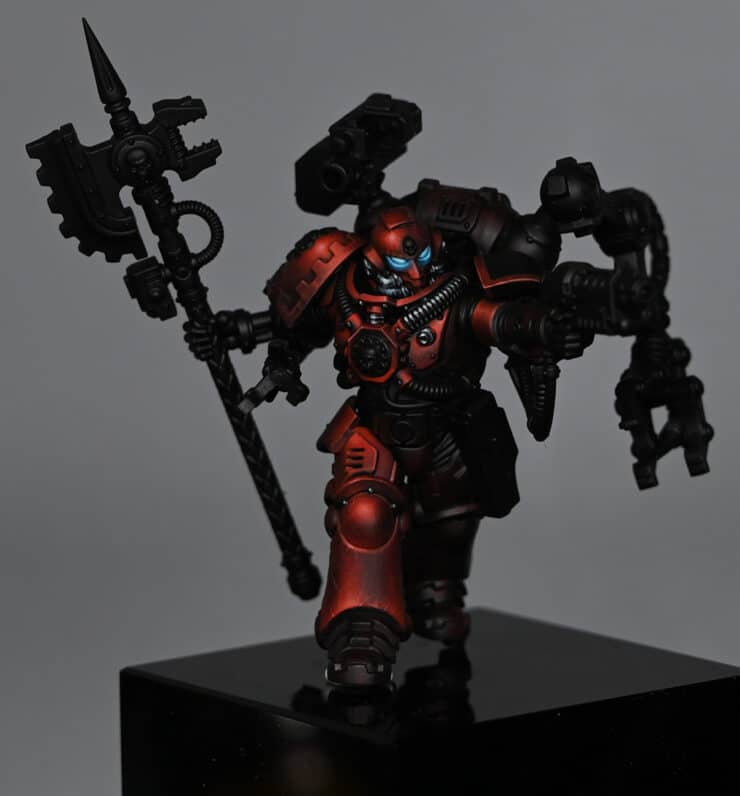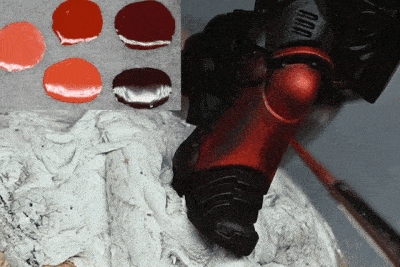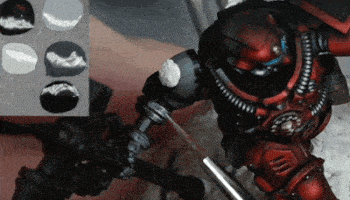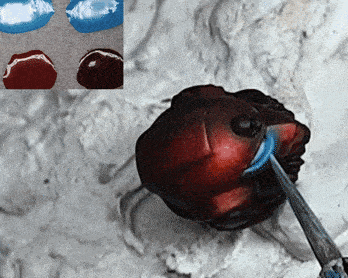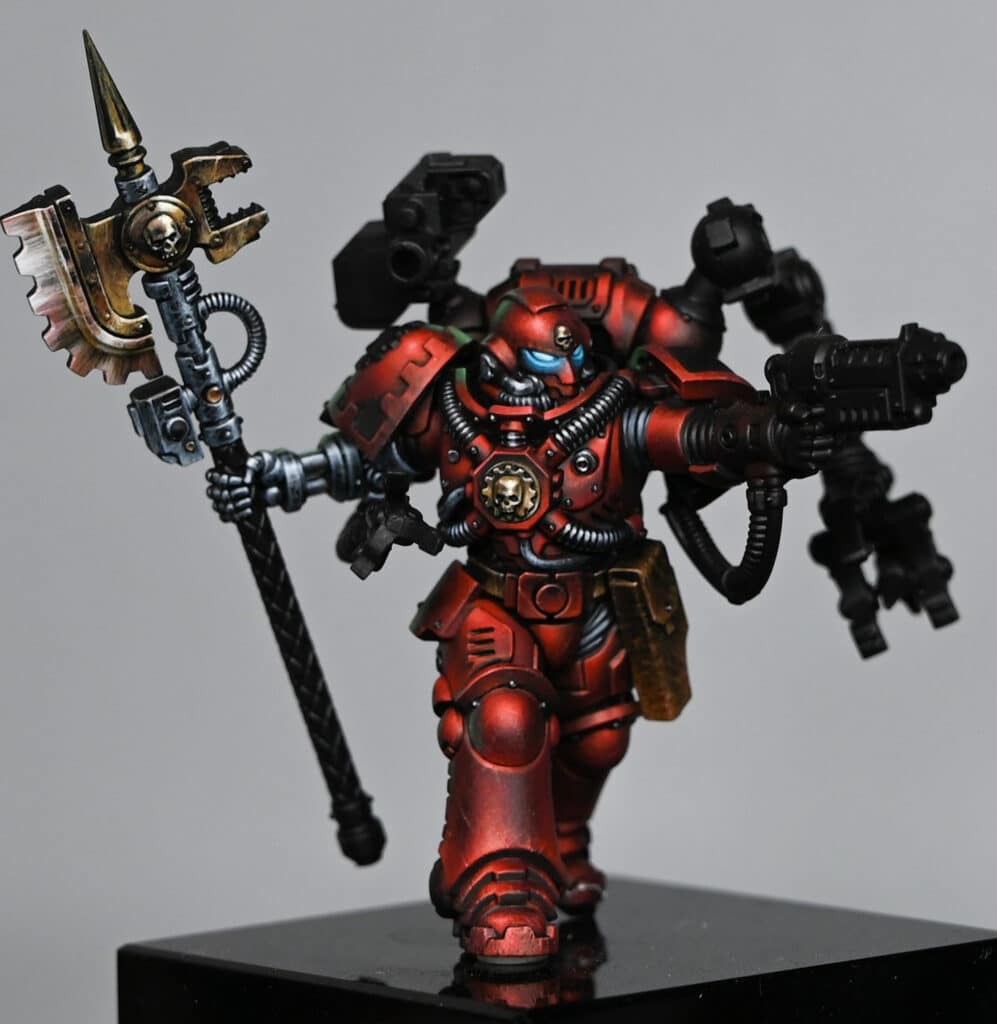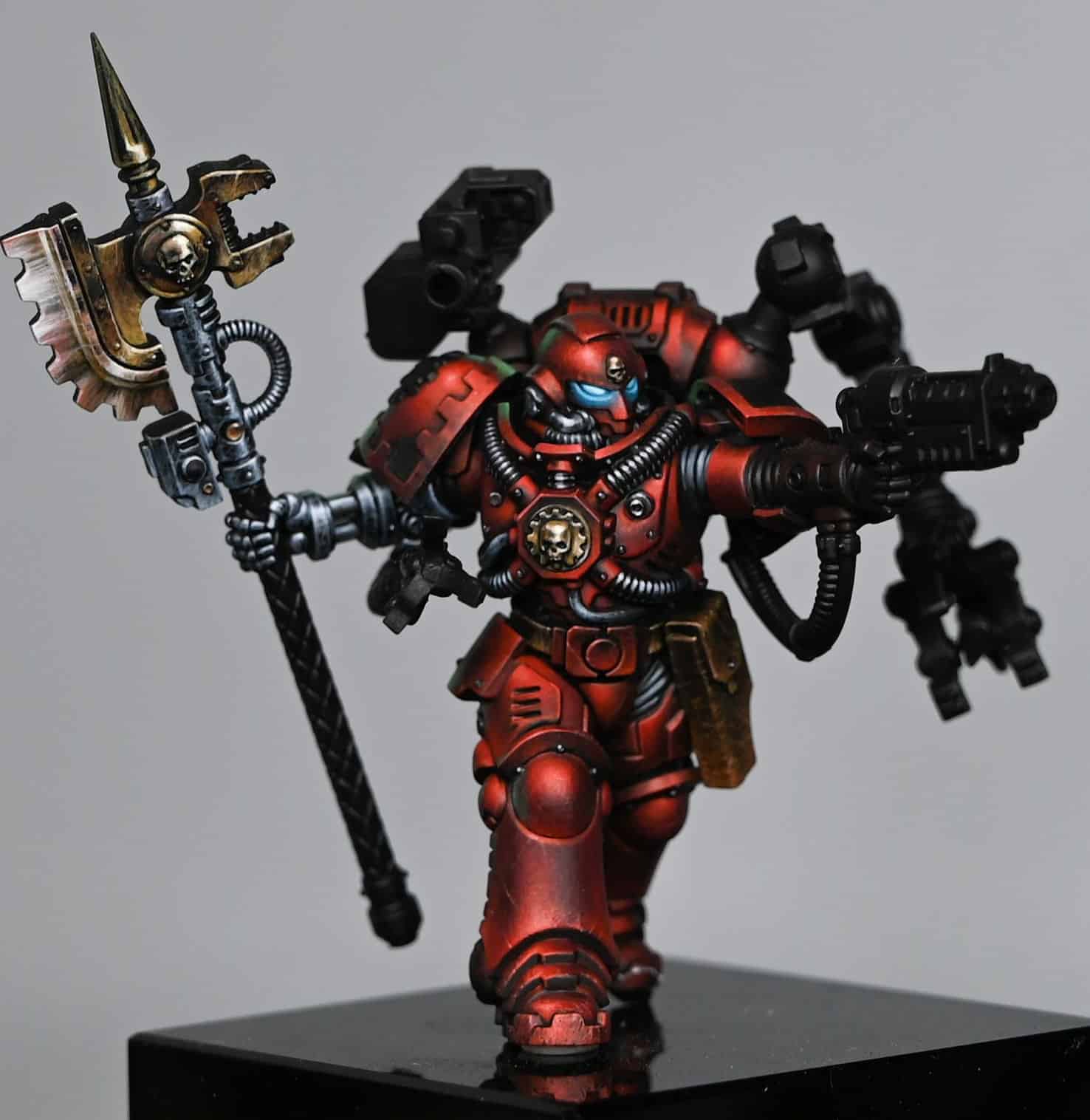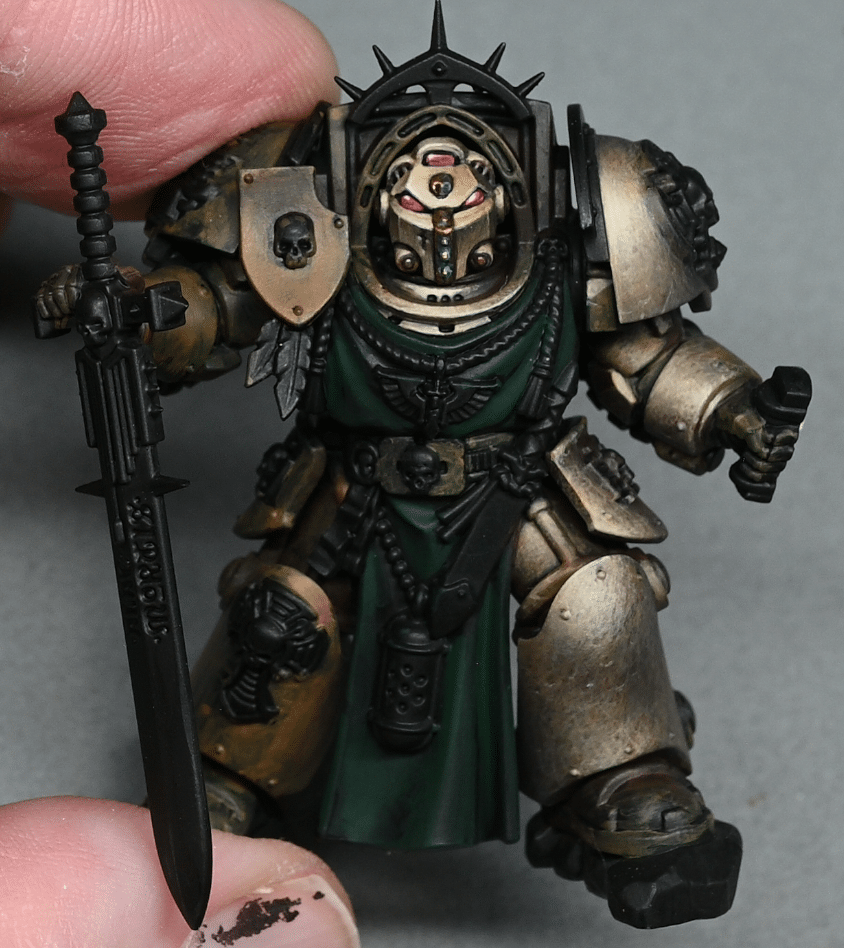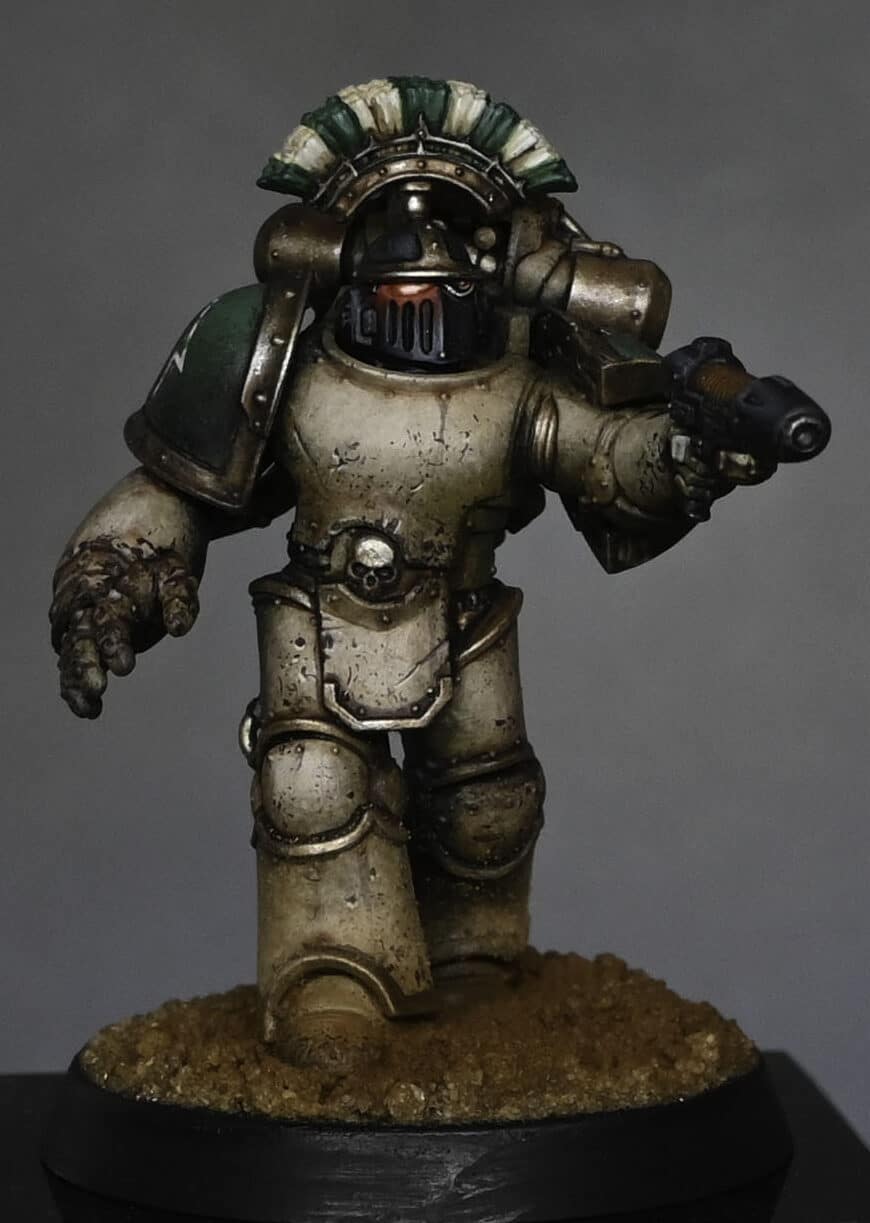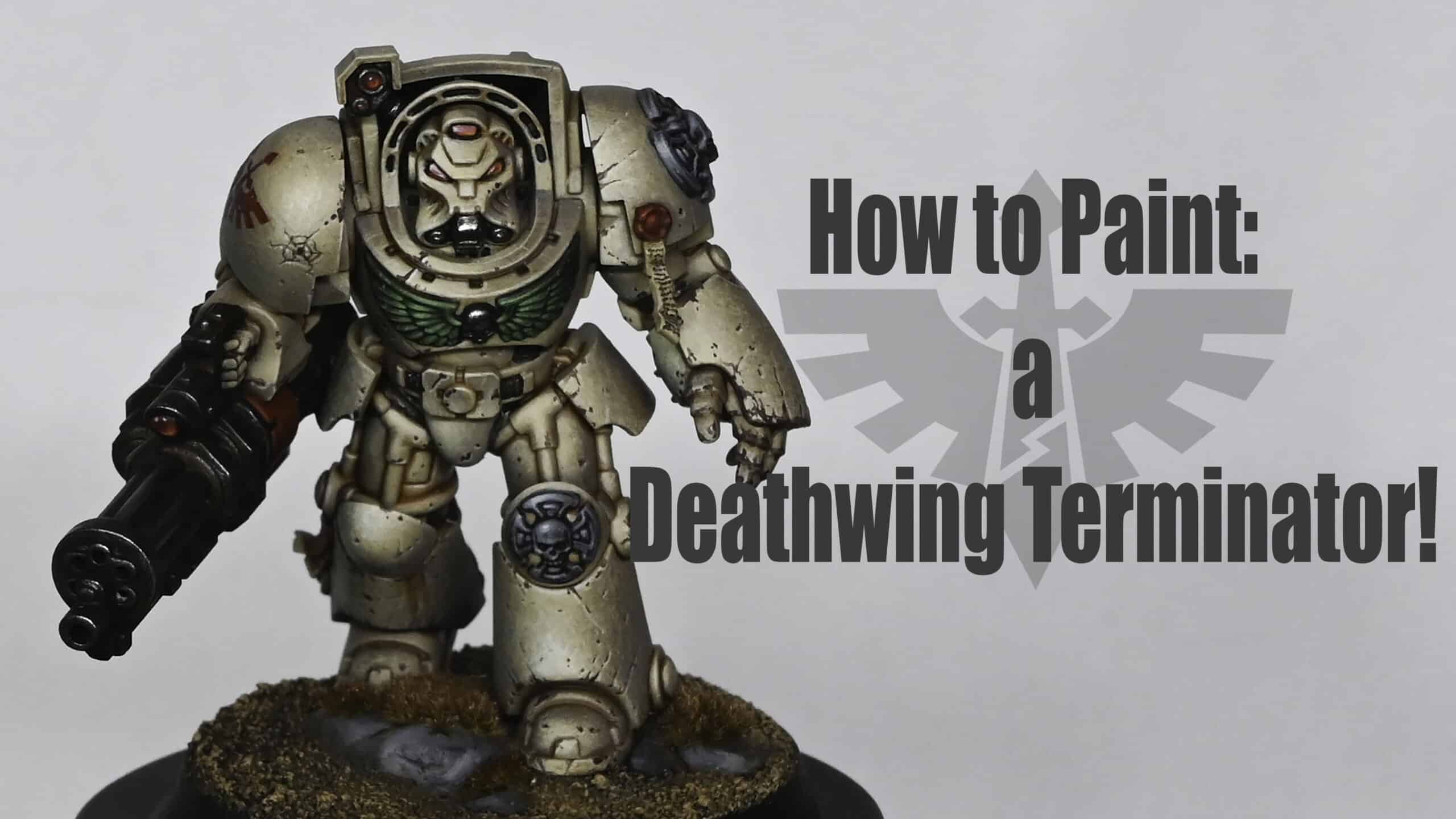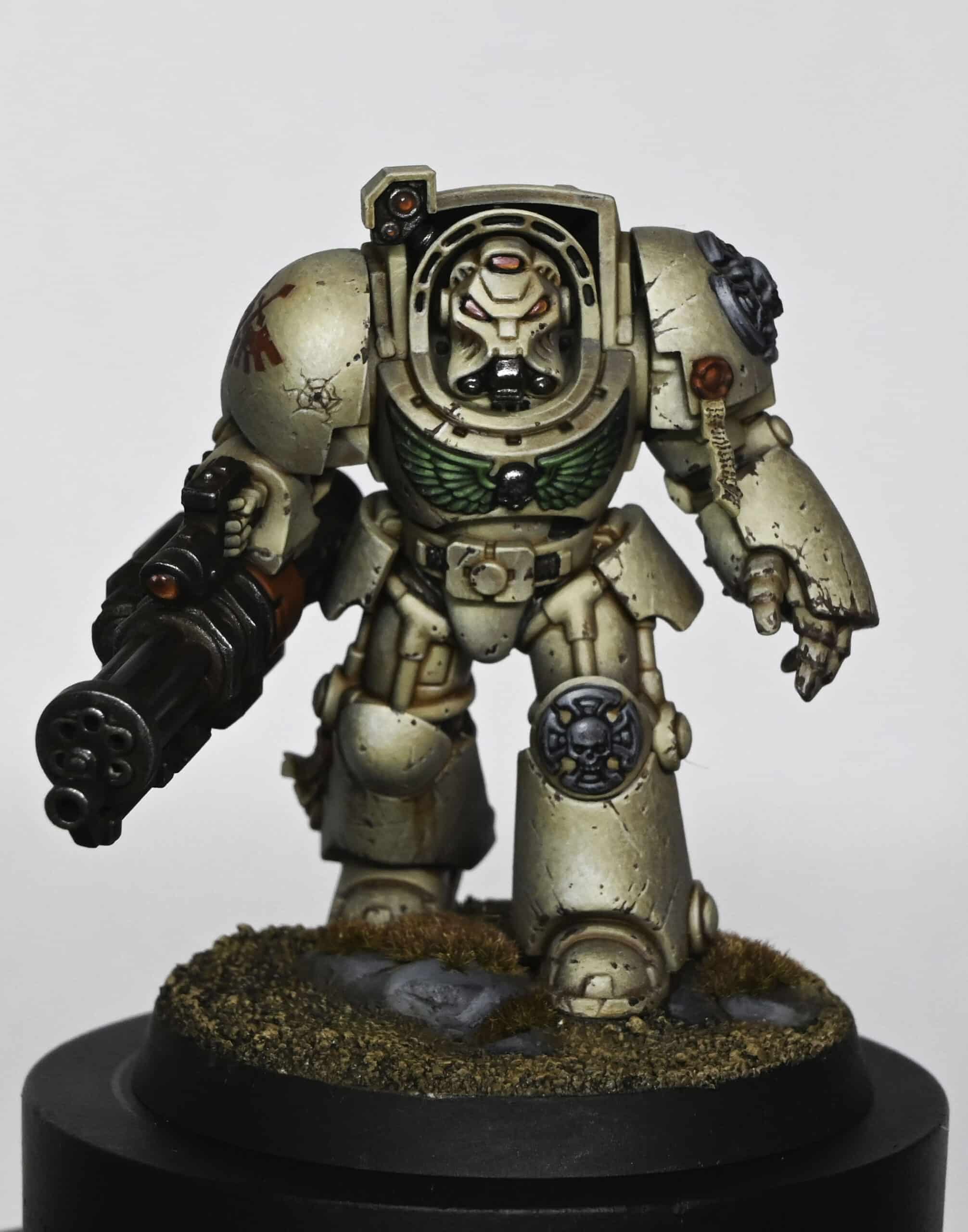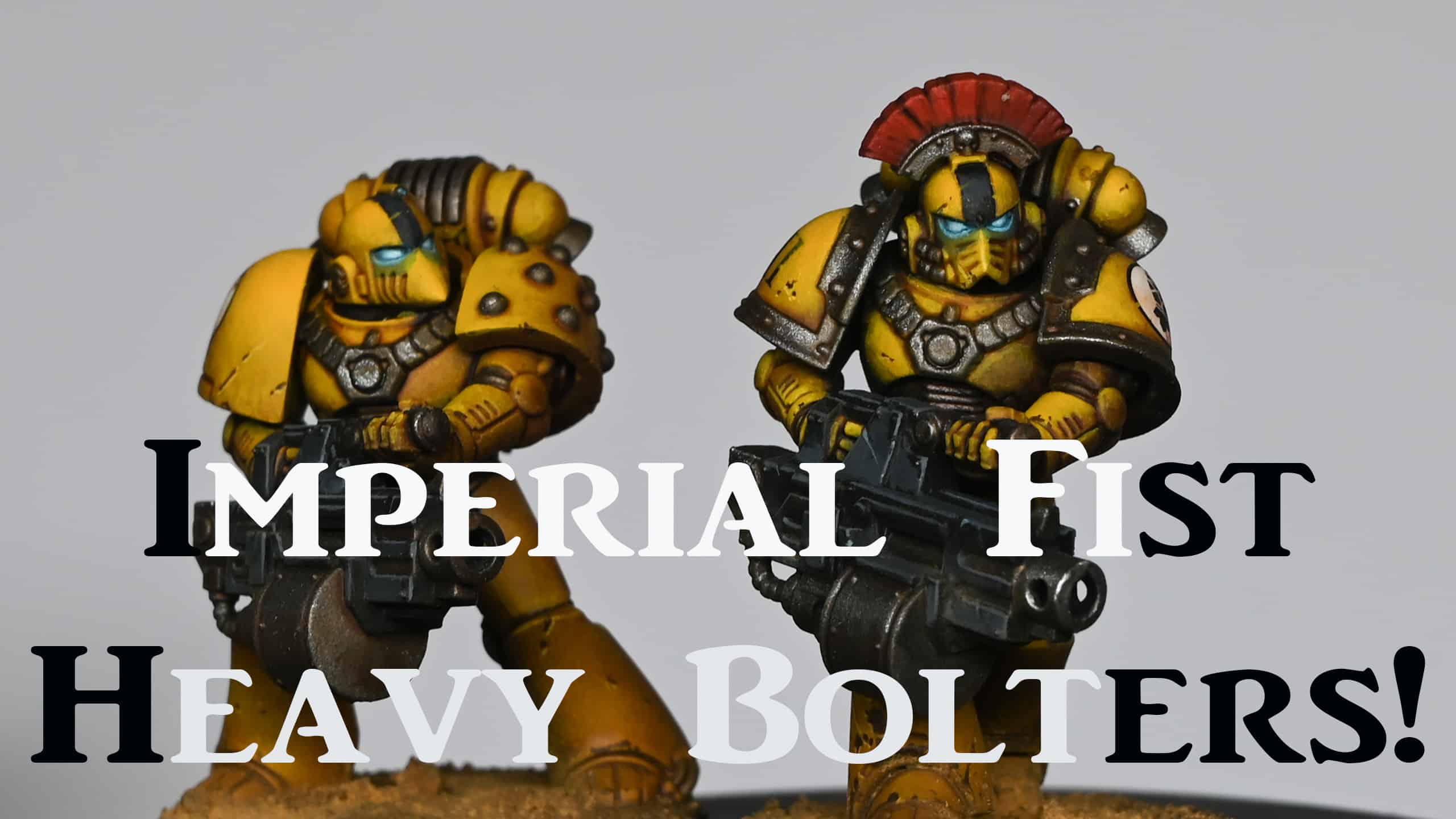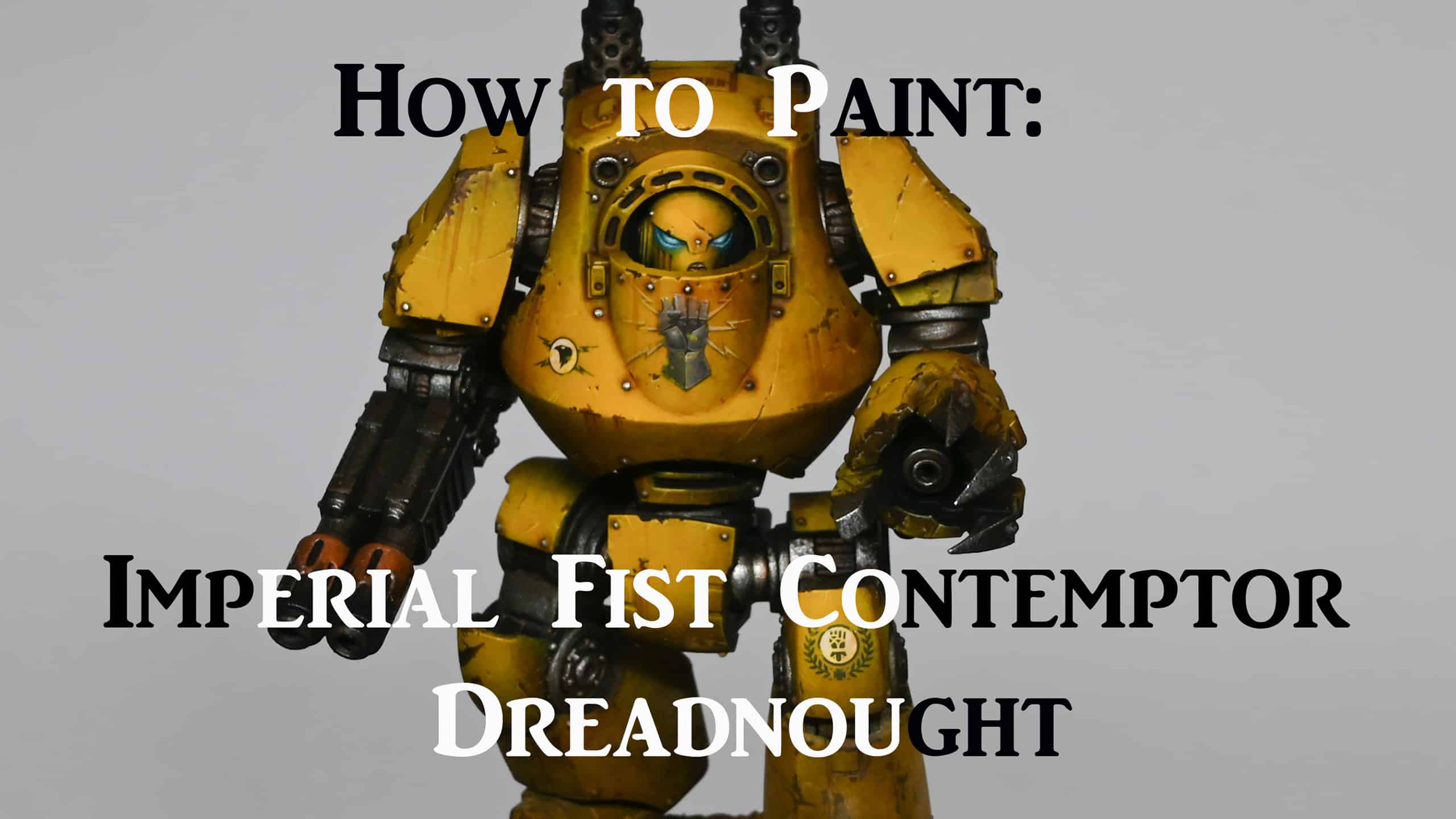I’m having a bit of fun painting this wonderful sculpt of a Red Techmarine. He’s going to be an Imperial Fist, but obviously the main armour is red ![]()
How to Paint a Red Techmarine Guide
Colours for the Red Techmarine armour:
Gal Vorbak Red, Khorne Red, Evil Sunz Scarlet, Wild Rider Red
The full tutorial on how I painted my red techmarine with full videos and step-by-step text guide with paints and materials used can be found at:
Who Are the Red Techmarines?
- Space Marine Engineers: Techmarines are members of the Space Marines, an elite group of super soldiers in the Warhammer 40k universe, who specialize in technology and engineering. They’re like the mechanics and IT support for the Space Marines, but with a lot more firepower.
- Dual Membership: They belong to both their Space Marine Chapter (a kind of military family) and the Cult Mechanicus, a religious group that worships the Machine God. This gives them a unique position with loyalties to both their warrior brethren and a techno-religious order.
- Red Power Armour: Their signature red power armour signifies their ties to the Adeptus Mechanicus, the organization that is all about technology and machines in the Imperium of Man.
What Do They Do?
- Maintainers of War Machinery: Techmarines ensure all the Space Marines’ gear, from simple guns to massive tanks, are in working order. Without them, the Space Marines would literally grind to a halt.
- Field Mechanics: On the battlefield, they’re responsible for repairing damaged equipment so it can go back into action. They carry a variety of tools and have robotic arms (Servo-arms and Mechadendrites) to help with repairs and combat.
- Educators: They are trained on Mars, the heartland of the Adeptus Mechanicus, for around 30 years, learning everything from the spiritual significance of machines to practical repair work. When they return to their Chapter, they pass on this knowledge.
- Wargear Experts: Techmarines have access to some of the most advanced and rare technology in the Imperium, including exotic weapons and machinery that require their expertise to operate and maintain.
Why Is a Red Techmarine Important?
- Critical to War Effort: Without Techmarines, the Space Marines would be unable to maintain their weapons and vehicles, making them ineffective in their role as the Imperium’s primary military force.
- Bridge Between Cultures: They serve as a vital link between the Adeptus Mechanicus and their respective Space Marine Chapters, embodying the practices and beliefs of both groups.
- Protectors of Technology: In a universe where technology is often ancient, mysterious, and revered, Techmarines are the keepers of this sacred knowledge, ensuring that the Space Marines can continue to wage war against their enemies.
In essence, a Red Techmarine is a hybrid of a warrior, engineer, and priest, dressed in red to show their dual allegiance, and absolutely indispensable for keeping the war machine of the Space Marines running.
More tutorials
Want to learn how to paint other types of Marines like I do? Try some of my video tutorials, below:
Videos Not Showing?
To view any of my paid tutorials, you need to be a member of the website – please click below to log in or join the site.
Not sure about joining just yet? Check out my Youtube for all my free tutorials or sign up as a free “friend” member on this site and visit the Freebies video page!





